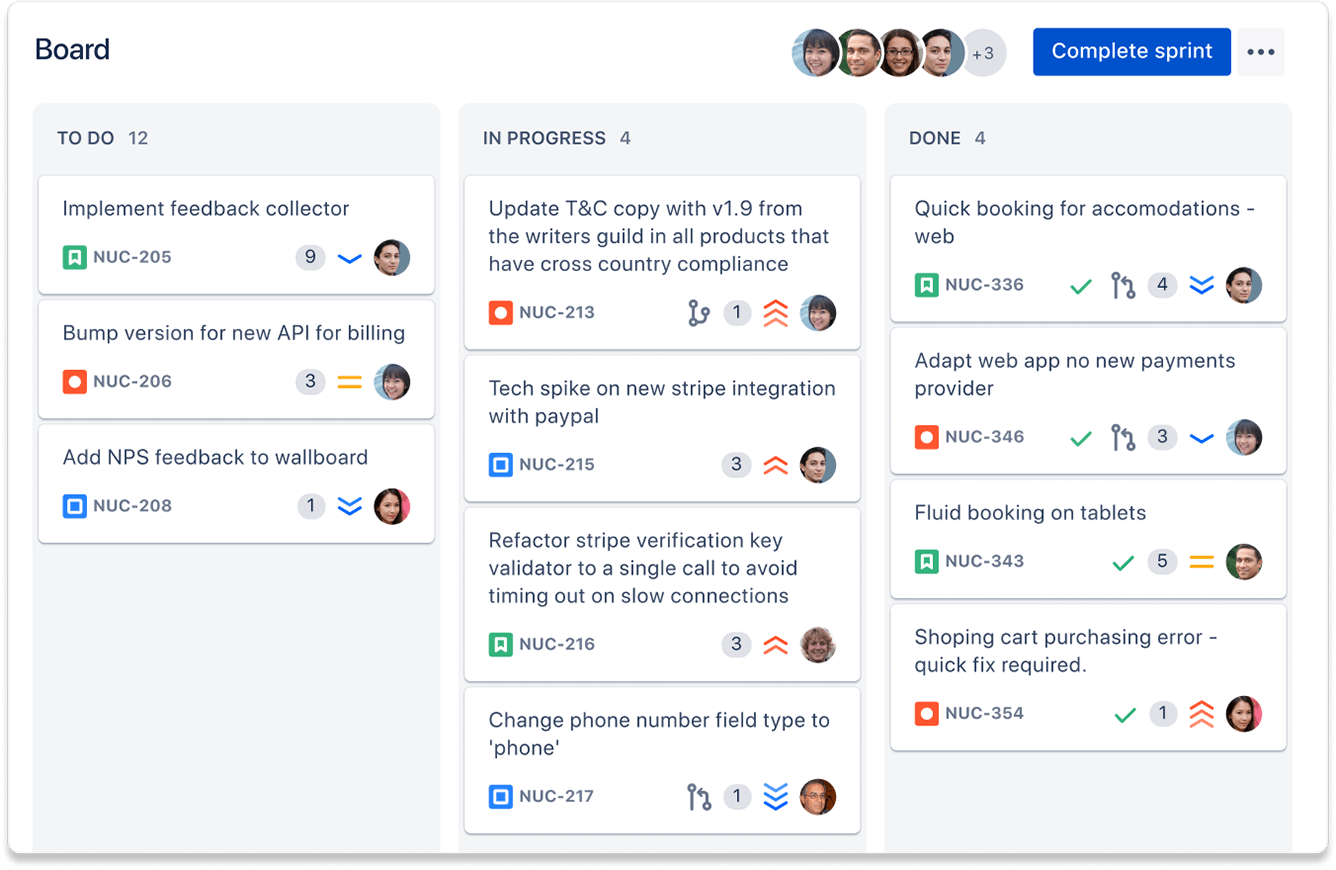
Scrum template
Easily plan, track, and manage ֵwork across sprints.
best for
Software development
key features
Sprint and task planning
Progress tracking
Sprint analytics tools
What is a scrum template?
The scrum template is pre-formatted to help teams organize and plan their work within the Scrum framework. Scrum is one of the most popular frameworks for implementing agile. With scrum, the product is built in a series of fixed-length iterations called sprints that give teams a framework for shipping on a regular cadence.
Boards
Scrum boards help agile teams break large, complex projects into manageable pieces of work so focused teams, working in sprints, ship faster.

Backlogs
In the scrum backlog, you can organize your sprints, fill them with issues of different types, then estimate and prioritize these issues.

Timelines
Create an interactive timeline by adding epics and mapping work items, dependencies, and releases. Timelines keep your teams and stakeholders in sync.

Reports
Out-of-the-box reports and dashboards in Jira Software offer critical insights within the context of your work to ensure your teams are always up to date and set up for success.

Iterate quickly
Release updates, fix bugs, and ship products within defined time periods called sprints.
Increase transparency
See who’s doing what and when, identify blockers early, and keep your team aligned with a single source of truth for all your team’s work.

Manageable workloads
Break down large projects into manageable tasks and milestones to keep your team focused and motivated.
How to get started with the scrum template
This template uses Jira Software to help accelerate your team across sprints.



